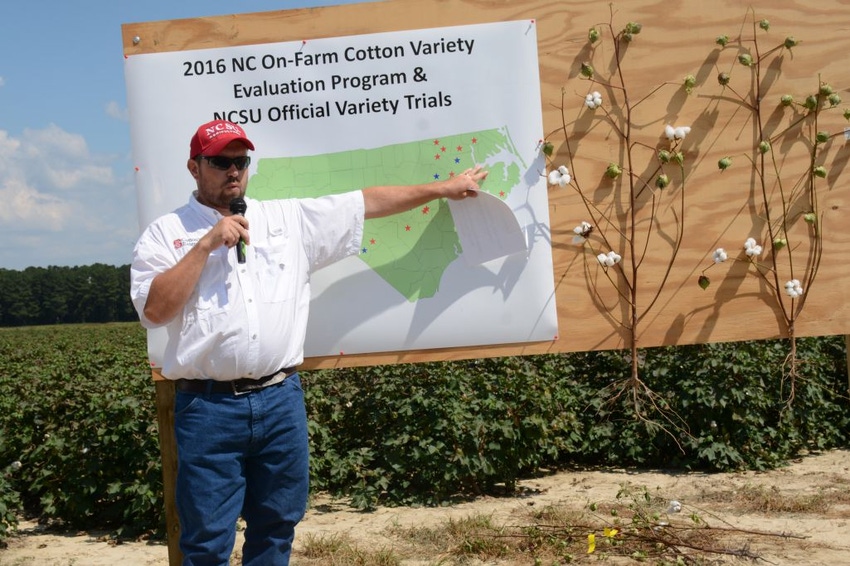
A cotton grower can lose $103 to $315 per acre with this single error
A large error in variety selection could cost you between $103 to $315. On average, over 17 on-farm trials last year, that was $156 per acre. That’s bigger than any other single agronomic input you’re going to make all year long.

In meetings and field days throughout the year, North Carolina State University Extension Cotton Specialist Guy Collins has continually emphasized the importance of choosing the right variety.
It was a point he emphasized again at this year’s North Carolina Cotton Field Day Sept. 15 at the Upper Coastal Plain Research Station in Rocky Mount.
“A large error in variety selection could cost you between $103 to $315. On average, over 17 on-farm trials last year, that was $156 per acre. That’s bigger than any other single agronomic input you’re going to make all year long,” Collins said. “Just to make a small error in variety selection, comparing the average of the top three varieties in each trial to the average of the remaining seven, that can cost between $69 to $236 per acre on average. That’s $120 per acre just to make a small error in variety selection.”
Based on cotton at 65 cents per pound, Collins said improper variety selection could have cost North Carolina cotton farmers between $45,600,000 to $59,280,000 on average in 2015 when choosing among only the best varieties.
“Don’t underestimate the importance of this decision,” Collins stressed.
The numbers come from N.C. State’s on-farm cotton evaluation program which consists of the most widely adapted and best-fit varieties for North Carolina cotton growers as determined by leading seed companies. “It is always advised that variety decisions be based on multi-environment and multi-year replicated data in order to identify varieties with a high degree of stability (strong performance across a wide range of environmental conditions),’ Collins noted in an Extension posting.
Collins urges cotton farmers to observe data from both the on-farm program and N.C. State’s Official Variety Test (OVT).
“The OVT and on-farm trials fit very well together. One of the major strengths of OVT is the number of varieties they can accommodate in a single trial. We can’t do that in an on-farm location. One of the strengths of the on-farm trials are the number of locations we can capture in a given year,” Collins said in Rocky Mount.
Together, the on-farm and OVT programs collectively offer a complete means for making variety decisions, Collins stressed.
The cotton specialist noted that in this year’s trials, vigor played an important role in varietal performance, compared to last year when vigor didn’t matter a great deal. “In 2015, we had good soil moisture and very good temperatures at planting. We were able to achieve a very acceptable stand in essentially, all of our varieties, even the ones that were lower vigor.”
This year was a different story.
“This is one of the most challenging planting seasons I’ve ever seen. We saw low emergence and weak vigor in all of the varieties the coming out of the ground. The differences in vigor this year were very important. And to be quite honest, some of those lower vigor varieties did struggle to get an acceptable stand established,” Collins said.
Collins said the vigor issues this year show that some varieties may need to be managed a little more carefully during the early season. “Maybe they don’t need to be planted as deep, maybe they need to be planted a little bit thicker. In certain varieties you are more than likely get a good stand in any planting scenario. Make sure you take this into account at planting time,” he said.
About the Author(s)
You May Also Like





